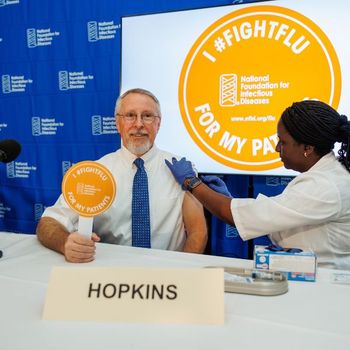
Poll Shows Many Washington State Residents Are Not Doing Enough to Protect Themselves Against West Nile Virus; Washington is the Only Lower-48 State Without WNV Activity in 2004
OLYMPIA -- Recent confirmation of human cases of West Nile virus illness in Oregon and Idaho leave Washington as the only state in the lower 48 that has not reported a human case acquired in state or other WNV activity this year. As the disease has spread into our bordering states, a random survey of Washington residents reveals many dont take the threat of West Nile virus very seriously and arent doing enough to protect themselves.
"West Nile virus is closing in on our state," said State Health Officer Dr. Maxine Hayes. "Its true there is no cure for the illness caused by West Nile virus, yet we all have the power to do something about it and reduce our chance of exposure simple things like wearing long sleeves and long pants and using insect repellant with DEET."
An Elway poll commissioned by the Department of Health in late summer asked a series of questions about their concerns over West Nile virus. Thirty-three percent said they were "not very concerned" that someone in their household might catch West Nile virus; 30 percent were "somewhat concerned" and only 13 percent were "very concerned." This attitude is reflected in personal protection behavior, as well: only 24 percent of respondents said they are using the insect repellant, DEET; and 31 percent are wearing a long sleeve shirt or long pants at dawn and dusk when mosquitoes are most active. But 51 percent say theyre draining standing water from containers around the home to reduce potential mosquito breeding habitat.
"We dont want people to be afraid of West Nile virus, yet it can be a fatal disease in some cases and people should take it seriously," said Secretary of Health Mary Selecky. "Wed like to see more people in this state take steps to avoid mosquito bites because we know West Nile virus is headed our way."
State and local health departments have been conducting extensive monitoring for West Nile virus. In 2004, there have been no positive test results on horses or dead birds West Nile appeared in both groups in Oregon and Idaho before human cases were confirmed in those states.
Washington had no positive test results for West Nile virus in 2003 in horses or dead birds, although two dead birds tested positive in our state in 2002 one in Pend Oreille County, and one in Snohomish County; and there were two horse cases in Washington that year.
West Nile virus is primarily a bird disease. Mosquitoes become infected by feeding on infected birds, and then pass the virus to uninfected birds, humans, horses or other hosts. Crows, ravens and jays are especially susceptible to dying from the virus.
Dead bird monitoring will continue until fall weather ends the mosquito season; until then, anyone who finds a dead bird that isnt decomposed should contact their local health department. Some dead birds may be collected for testing; use caution to avoid handling dead birds with bare hands. Gloves or shovels should be used to place the carcass inside two plastic bags. Keep the carcass in a cool place while the local health department is notified.
Most people bitten by a West Nile virus infected mosquito wont show any signs of illness. Some people may develop mild flu-like symptoms that resolve without treatment. In a small number of cases the virus can cause serious illness including fever and inflammation of the brain. People over age 50 have the highest risk for serious illness.
Source: Washington State Department of Health
Newsletter
Stay prepared and protected with Infection Control Today's newsletter, delivering essential updates, best practices, and expert insights for infection preventionists.






